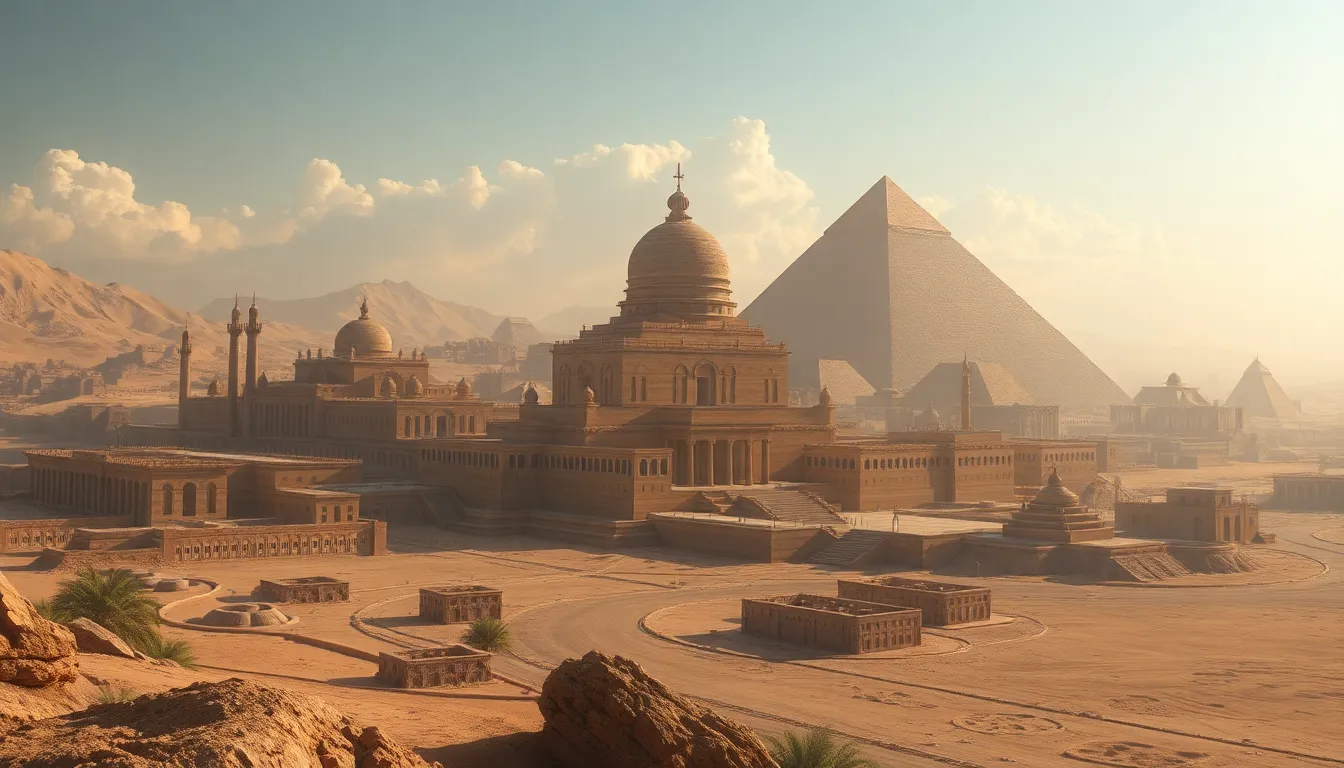The Mythical Geography of the City of Tanis
I. Introduction
Tanis, an ancient city located in the Nile Delta of Egypt, holds a significant place in both history and mythology. Known for its rich cultural heritage, Tanis was not only a bustling trade hub but also a center for religious activity. This article aims to explore the mythical aspects of Tanis’s geography, delving into its landscape, sacred sites, and the legends that have emerged from its unique setting.
II. Historical Background of Tanis
Tanis, also known as San el-Hagar, was initially established during the 3rd Dynasty of the Old Kingdom. Over time, it emerged as a vital city during the 21st and 22nd Dynasties, becoming the capital of the Nile Delta region. Its strategic location made it a crucial point for trade, connecting Egypt with the Mediterranean.
- Importance in Trade: Tanis was a significant trading center, facilitating commerce between Egypt and other Mediterranean cultures.
- Cultural Significance: The city was a melting pot of cultures, where various traditions and practices blended, influencing Egyptian society.
- Religious Center: Tanis was home to several temples dedicated to major Egyptian deities, reinforcing its importance in the spiritual landscape of ancient Egypt.
Archaeological excavations have revealed much about Tanis’s historical significance. Notable discoveries include the royal tombs, monumental architecture, and artifacts that highlight the city’s role in ancient Egyptian civilization.
III. Geographic Location and Landscape Features
Tanis is situated in the northeastern part of the Nile Delta, characterized by its lush, fertile land. The geographical setting of Tanis is pivotal to understanding its mythical geography.
- Landscape Features: The city is surrounded by wetlands and marshes, contributing to its rich biodiversity.
- Natural Resources: The abundance of papyrus and fish in the Nile Delta has led to various mythical associations, such as the symbolism of rebirth and fertility.
The Nile River, flowing adjacent to Tanis, is central to its mythology. In ancient Egyptian belief, the Nile was not just a water source but a divine river that nourished the land and supported life.
IV. Mythical Elements in Tanis’s Geography
Tanis’s landscape is interwoven with sacred sites and natural formations that play pivotal roles in Egyptian mythology.
- Sacred Sites: Temples dedicated to gods like Amun and Osiris were strategically built in Tanis, believed to be places where the divine met the earthly.
- Legends of the Landscape: Local myths often feature the marshes as homes to deities or spirits, reinforcing the idea of nature as a living entity.
Additionally, Tanis’s connection with deities is evident in the way certain geographical features were personified in myths. For instance, the fertile lands were associated with the goddess Isis, symbolizing regeneration and motherhood.
V. Tanis in Egyptian Mythology
Tanis is steeped in myths that highlight its geographical features, contributing to its mystical reputation among ancient Egyptians.
- Key Myths: The city’s legends often depict the Nile as a life-giving river, with stories of gods traversing its waters.
- Creation Myths: Tanis is linked to the creation myth of the world, where the primordial waters of Nun gave rise to life, with the Nile symbolizing the source of sustenance.
These myths not only shaped the religious practices in Tanis but also influenced how the inhabitants viewed their environment, perceiving it as a manifestation of divine forces.
VI. The Influence of Tanis on Later Cultures
Tanis’s mythical geography extends beyond ancient Egypt, influencing various cultures throughout history.
- Greco-Roman Literature: Writers such as Herodotus and Pliny the Elder referenced Tanis, weaving its myths into their narratives and shaping perceptions of Egypt in the classical world.
- Modern Interpretations: Tanis continues to inspire contemporary interpretations of mythical geography, often depicted in literature, films, and art.
As a cultural symbol, Tanis represents the fusion of history and myth, attracting interest from scholars and enthusiasts alike.
VII. Archaeological Insights into the Mythical Geography
Archaeological discoveries in Tanis have provided invaluable insights into the intersection of myth and reality.
- Significant Discoveries: Excavations have unearthed temples, statues, and inscriptions that link the physical landscape to mythical narratives.
- Research Impact: Ongoing archaeological research continues to reveal how ancient Egyptians interacted with their environment, interpreting it through a mythical lens.
As excavations progress, they offer promising implications for understanding the cultural and religious significance of Tanis in the context of ancient Egyptian civilization.
VIII. Conclusion
The mythical geography of Tanis is a rich tapestry woven from history, culture, and mythology. Its landscape, steeped in sacred significance and legendary tales, continues to captivate scholars and enthusiasts. The enduring legacy of Tanis in both historical and cultural contexts invites further exploration, as each discovery adds depth to our understanding of this remarkable ancient city.
In summary, Tanis stands not only as a testament to the ingenuity of ancient Egyptian civilization but also as a symbol of the power of myth in shaping human perception of geography and the divine.




